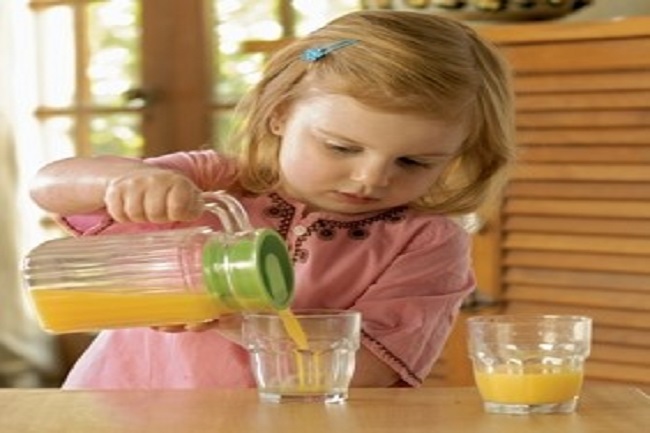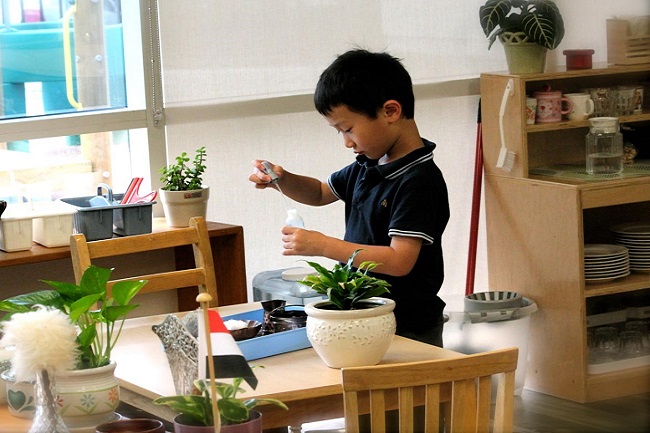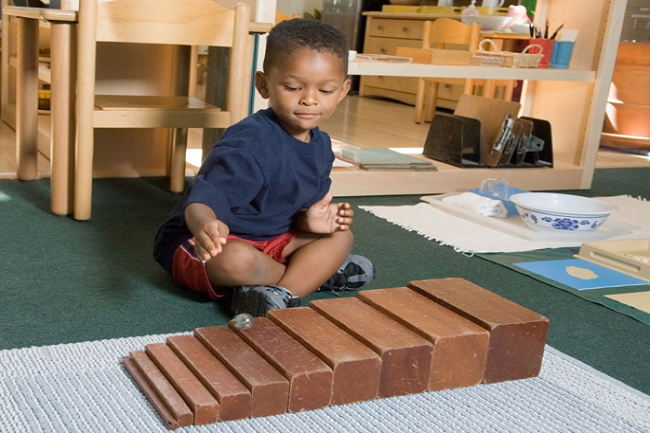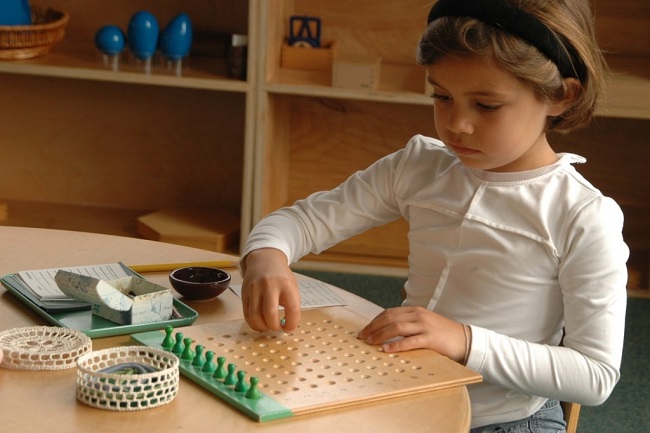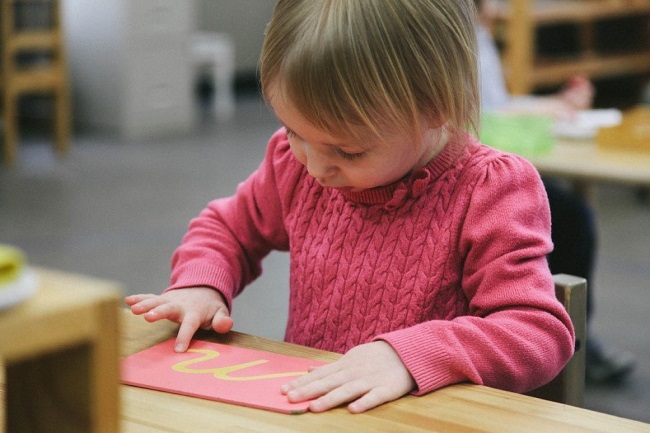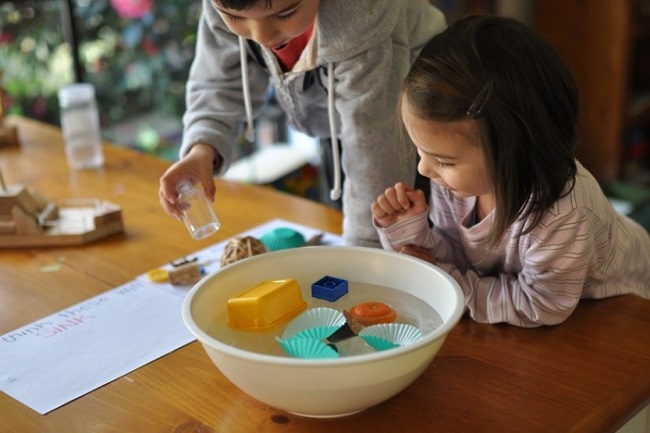Montessori Programs
MONTESSORI BASED PRESCHOOL PROGRAM
OUR MONTESSORI PRESCHOOL PROGRAM IS DESIGNED TO UTILIZE THE ABSORBENT MIND OF CHILDREN AGED 3-6 YEARS OLD.
Montessori based Preschool- The Montessori Method recognizes the uniqueness of each child and allows the child to develop according to her/his inherent abilities. Our curriculum introduces children to Maria Montessori’s five developmental areas-practical life, sensorial, math, language arts, and culture science. In a carefully prepared environment, a variety of authentic, Montessori materials is arranged to appeal to their love of logic and order and their natural desire to learn. Children are guided through various lessons and have the opportunity to explore their unique interests and talents. Our school offers well-equipped classrooms with qualified preschool and Montessori teachers.
FULL DAY MONTESSORI KINDERGARTEN PROGRAM
A BRIEF OVERVIEW OF OUR MONTESSORI KINDERGARTEN PROGRAM.
OUR MONTESSORI PROGRAM WILL RUN IN CONJUNCTION WITH THE KINDERGARTEN PROGRAM TO ENHANCE THE CHILD’S LEARNING SKILLS.
Our Kindergarten Curriculum follows the Alberta Education Curriculum as laid out by the Government of Alberta. The New Alberta Curriculum Consists of Seven Integrated Discipline: Early Literacy, Citizenship and Identity, Personal and Social Responsibility, Environment and Community Awareness, Physical Skills and Well-Being and Creative Expression. In accordance with the Montessori Philosophy, strong emphasis is placed upon the development of literacy and numeracy. Both language arts and mathematical skills are also taught in a progressive, systematic manner.
MONTESSORI METHOD– Montessori is a method of education based on self-directed activity, hands-on learning, and collaborative play. In Montessori classrooms, children make creative choices in their learning, while the classroom and the teachers offer age-appropriate activities to guide the process. Children work in groups and individually to discover and explore the world’s knowledge and develop their maximum potential.
WHY MONTESSORI- Montessori Classrooms place a high value on teaching children how to learn for themselves. Students are encouraged to reach their highest potential at their own individual pace. Unlike traditional schools, which often rely on textbooks or workbooks, Montessori schools utilize a range of beautiful, hands-on materials which foster a deep sense of concentration and curiosity about the world.
THE PREPARED ENVIRONMENT- Specially designed learning materials are displayed on open shelves, easily accessible to the children. Classrooms also include low sinks accessible to the children, child-sized furniture, cozy spaces for quiet reading, reachable shelves with work available for free choice, and child-sized kitchen utensils to eat, prepare, and clean up their snack on their own.
MONTESSORI LEARNING MATERIALS- Montessori materials are not only beautiful and inviting but ingenious. They teach only one skill to allow the child to work independently and master the intended concept. The materials are also “self-correcting.” This means the child can identify if they have done an activity accurately and try again without intervention from a teacher. Working with self-correcting materials helps children develop confidence and self-sufficiency and promotes critical thinking.
PUTTING THE MONTESSORI METHOD INTO PRACTICE
The Early Childhood classroom offers five areas of study: Practical Life, Sensorial, Mathematics, Language Arts, and Culture Science.
PRACTICAL LIFE
Practical Life activities help children learn how to care for themselves and their environment. These activities help children become more independent, leading to greater self-confidence and the ability to face new challenges. Practical Life exercises include lessons in grace and courtesy, care for self, and care for the environment. Children learn daily life skills, such as getting dressed, preparing snacks, setting the table, and caring for plants and animals. These activities aim to enhance coordination, concentration, independence and indirectly prepare children for writing and reading.
SENSORIAL
Dr. Maria Montessori designed sensorial materials to help children express and classify their sensory experiences. The purpose of sensory activities is to aid in the development of the intellectual senses of the child, which develops the ability to observe and compare with precision. Sensorial learning helps children classify their surroundings and create order. It lays the foundation for learning by developing the ability to classify, sort, and discriminate—skills necessary in math, geometry, and language. Sensorial materials focus on visual perception, tactile impressions, auditory sense, olfactory, and taste perceptions. Activities often include matching and grading materials that isolate the sense of sight, sound, touch, taste, and smell.
MATHEMATICS
Through hands-on activities, children learn to identify numerals and match them to their quantity, understand place-value and the base-10 system, and practice addition, subtraction, multiplication, and division. They also explore patterns in the numbering system. With an exploratory approach, children do more than memorize math facts; they gain a firm understanding of the meaning behind them.
Mathematical concepts are introduced to the child using concrete sensorial materials. Initial explorations with sensory materials encourage children to understand basic maths concepts such as learning number recognition, counting, and sequencing numbers. Sensorial work prepares the child for a more formal introduction to mathematics and abstract mathematical concepts such as the decimal system and mathematical operations.
LANGUAGE ARTS
Activities throughout the Early Childhood classroom teach language, help children acquire vocabulary, and develop skills needed for writing and reading. The ability to write, a precursor to reading, is introduced first. Using hands-on materials, children learn letter sounds, how to combine sounds to make words, how to build sentences, and how to use a pencil. Once these skills are acquired, children spontaneously learn to read.
Language materials are designed to enhance vocabulary and explore both written and spoken language. Through language-based activities, such as the sandpaper letters and the moveable alphabet, children learn phonetic sounds and compose words phonetically. They progress using concrete materials to compose their written work, read the work of others, and learn to communicate their unique thoughts and feelings.
CULTURE AND SCIENCE
A wide range of subjects, including history, geography, science, art, and music, are integrated with lessons in the cultural area of the curriculum. Children learn about their community and the world around them. Discovering similarities and differences among people and places helps them develop an understanding and appreciation of the diversity of our world and respect for all living things. They develop an awareness and appreciation of the world around them.
“The children learn from one another and throw themselves into the work with enthusiasm and delight. This atmosphere of quiet activity develops a fellow-feeling, an attitude of mutual aid, and, most wonderful of all, an intelligent interest on the part of the older children in the progress of their little companions.”
Maria Montessori



